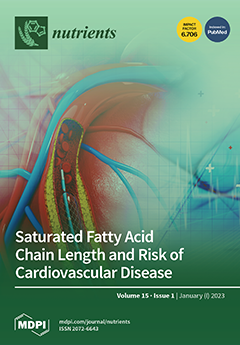We aimed to assess the lipopolysaccharide (LPS), or heat shock (HS) induction, and glutamine-modulating effects on heat shock protein-90α (HSP90α) and cytokines in an ex vivo model using peripheral blood mononuclear cells (PBMCs). The PBMCs of patients with septic shock, trauma-related systemic inflammatory
[...] Read more.
We aimed to assess the lipopolysaccharide (LPS), or heat shock (HS) induction, and glutamine-modulating effects on heat shock protein-90α (HSP90α) and cytokines in an ex vivo model using peripheral blood mononuclear cells (PBMCs). The PBMCs of patients with septic shock, trauma-related systemic inflammatory response syndrome (SIRS), and healthy subjects were incubated with 1 μg/mL LPS at 43 °C (HS). Glutamine 10 mM was added 1 hour before or after induction or not at all. We measured mRNA HSP90α, monocyte (m) and lymphocyte (l) HSP90α proteins, interleukin (IL)-1b, -6, -8, -10, tumor necrosis factor-α (TNF-α), and monocyte chemoattractant protein-1 (MCP-1) supernatant levels. Heat shock increased the HSP90α mRNA and mHSP90α in all groups (10-fold in sepsis,
p < 0.001 and
p = 0.047, respectively). LPS induced the mHSP90α and lHSP90α in healthy (
p < 0.001) and mHSP90α in SIRS (
p = 0.004) but not in sepsis. LPS induced the cytokines at 24 and 48 h in all groups, especially in trauma (
p < 0.001); HS only induced the IL-8 in healthy (
p = 0.003) and septic subjects (
p = 0.05). Glutamine at 10 mM before or after stimulation did not alter any induction effect of LPS or HS on HSP90α mRNA and mHSP90α protein in sepsis. In SIRS, glutamine before LPS decreased the mHSP90α but increased it when given after HS (
p = 0.018). Before or after LPS (
p = 0.049) and before HS (
p = 0.018), glutamine decreased the lHSP90α expression in sepsis but increased it in SIRS when given after HS (
p = 0.003). Regarding cytokines, glutamine enhanced the LPS-induced MCP-1 at 48 h in healthy (
p = 0.011), SIRS (
p < 0.001), and sepsis (
p = 0.006). In conclusion, glutamine at 10 mM, before or after LPS and HS, modulates mHSP90α and lHSP90α in sepsis and SIRS differently and unpredictably. Although it does not alter the stimulation effect on interleukins, glutamine enhances the LPS induction effect on supernatant MCP-1 in all groups. Future research should seek to elucidate better the impact of glutamine and temperature modulation on HSP90α and MCP-1 pathways in sepsis and trauma.
Full article






